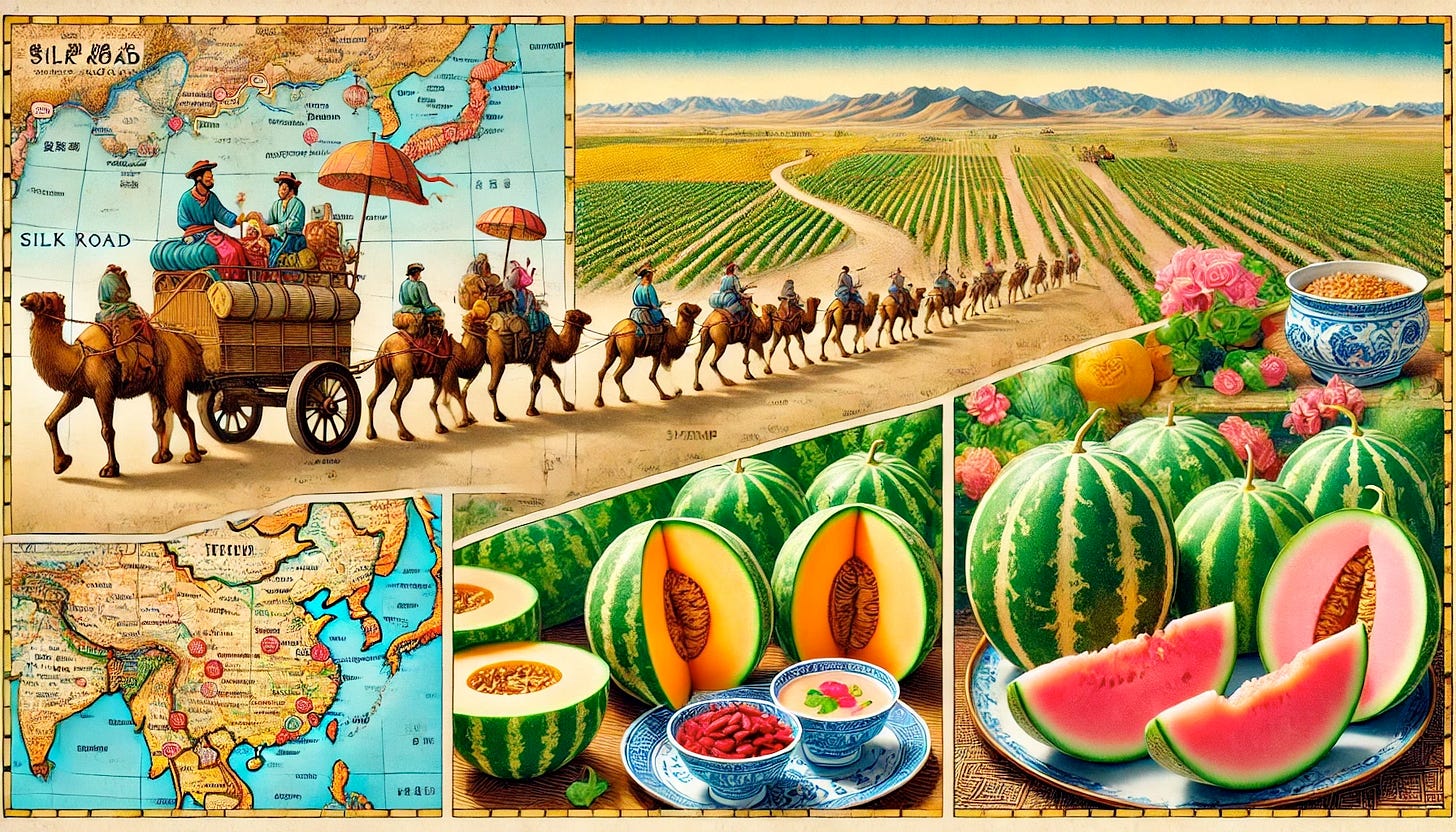The Silk Road, an intricate web of trade pathways connecting the East and West, was crucial for the movement of goods and shaping the agricultural and culinary traditions of the territories it crossed.
So, what do melons have to do with it?
Plenty. And for Chinese cuisine, the introduction of melons proved to be a delicious adaptation.
Melons were transported across the Silk Road and integrated into Chinese agriculture from Africa and Southwestern Asia. This led to the breeding of unique melon varieties that became essential elements of Chinese gastronomy. The diverse genetic makeup of these melons in China illustrates its importance as a secondary center of diversity for melons, showcasing the Silk Road's influence in spreading different crop varieties and agricultural techniques (Luan, Delannay, & Staub, 2008).
The adaptation of melons to fit China's specific environmental and culinary needs resulted in a spectrum of varieties, from thin-skinned melons favored for fresh consumption to thicker-skinned ones ideal for storage. Cultivating varieties like the Hami melon from Xinjiang highlights the successful integration of melons into the fabric of Chinese regional cuisines.
In Chinese culinary arts, melons extend beyond their raw form, contributing to various dishes such as soups, stir-fries, and medicinal concoctions. They are valued for their ability to harmonize the body's yin and yang energies and their cooling effects, making them a popular ingredient in summer dishes to enhance health and wellness.
Examples of Chinese melon cuisine include the dish "Hami Melon with Shrimp," which combines the sweet crunch of Hami melon with the subtle taste of shrimp, showcasing the unique blend of flavors characteristic of Chinese gastronomy. Another dish, "Sweet Melon Soup with Goji Berries," emphasizes the melon's sweetness alongside the nutritional benefits of goji berries, reflecting the pursuit of balance and wellness in Chinese cooking.
Today, the Silk Road's legacy persists in Chinese food culture, with an extensive variety of melon types appreciated for their flavors and health advantages. The assortment of melons cultivated in China, ranging from juicy cantaloupes to aromatic muskmelons, is an example of the rich cultural interactions facilitated by the ancient trade routes.
As Chinese cuisine progresses, the melding of age-old melon recipes with modern culinary techniques continues to honor a deep-rooted food heritage that cherishes both flavor and health benefits, maintaining the enduring influence of the Silk Road.
Additional Sources:
Luan, F., Delannay, I. Y., & Staub, J. (2008). Chinese melon (Cucumis melo L.) diversity analyses provide strategies for germplasm curation, genetic improvement, and evidentiary support of domestication patterns. Euphytica, 164, 445-461. Read the paper.





